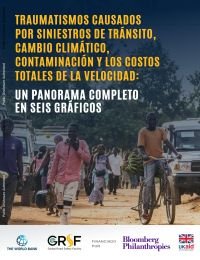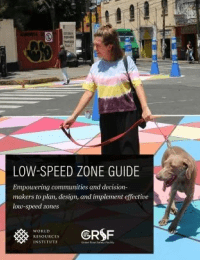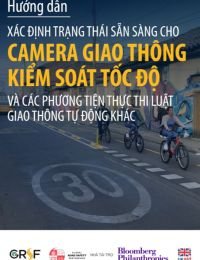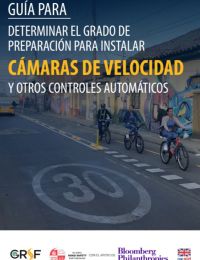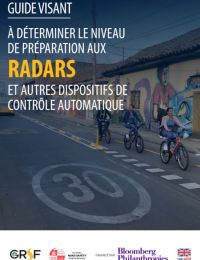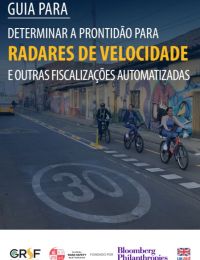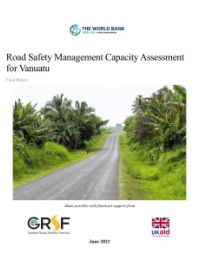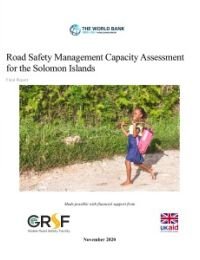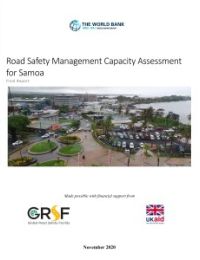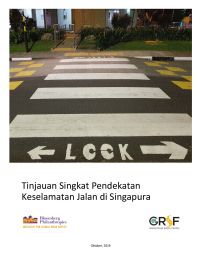Publications
11-20 of 26
-
-
Traffic crashes are a leading cause of death and serious injury worldwide; most notably, they are the leading cause of death and serious injury among young people aged 5–29. Higher motor vehicle speeds increase the likelihood and severity of crashes.
-
Low-speed zones have emerged as one of the most promising strategies for speed management. They can be appropriate in many different contexts and at various scales, as exemplified by case studies of successful projects around the world.
-
Low-speed zones in cities need to be well-planned, well-designed, and well-built, to maximize safety and other benefits.
-
Physical traffic-calming measures and target speeds of 30 kilometers/hour (km/h) or lower have the greatest proven safety benefits.
-
Key considerations for implementation include stakeholder engagement, site selection (including risk: pedestrian/vulnerable road user presence), enforcement, evaluation, and the adaptation of basic principles for low-speed zone design to the local context.
- Xác định ngắn gọn giá trị thực tế mạnh mẽ của AE trong việc cứu sống và giảm thương tích.
- Xác định các vấn đề và tiêu chí cần xem xét trước khi bắt đầu thực thi tự động. Xác định các bước cần thực hiện để đạt được sự sẵn sàng cho việc thực thi tự động. Xác định các vấn đề để cải thiện các hệ thống thực thi tự động hiện có.
- Cung cấp danh sách kiểm tra để đảm bảo cân nhắc đầy đủ các vấn đề để đánh giá mức độ sẵn sàng triển khai hệ thống AE hoặc cải thiện hệ thống hiện có.
- Identificar brevemente el poderoso valor práctico de la AE para salvar vidas y reducir las lesiones.
- Identificar los problemas y criterios que se deben considerar antes de comenzar la aplicación automática de la ley. Identificar los pasos que se deben tomar para lograr la preparación para la aplicación automática de la ley. Identificar los problemas para mejorar los sistemas de aplicación automática de la ley existentes.
- Proporcionar una lista de verificación para garantizar que se tenga en cuenta adecuadamente los problemas para evaluar la preparación para implementar un sistema de AE o mejorar un sistema existente.
- Identifier brièvement la valeur pratique considérable du CA pour sauver des vies et réduire les blessures.
- Identifier les problèmes et les critères à prendre en compte avant de commencer le contrôle automatisé. Identifier les mesures à prendre pour se préparer au contrôle automatisé. Identifier les problèmes pour améliorer les systèmes de contrôle automatisé existants.
- Fournir une liste de contrôle pour garantir que les problèmes sont pris en compte de manière adéquate pour évaluer l'état de préparation à la mise en œuvre d'un système CA ou à l'amélioration d'un système existant.
- Identificar brevemente o poderoso valor prático da AE em salvar vidas e reduzir ferimentos.
- Identificar problemas e critérios a serem considerados antes de iniciar a fiscalização automatizada. Identificar etapas a serem tomadas para atingir a prontidão para a fiscalização automatizada. Identificar problemas para melhorar os sistemas de fiscalização automatizados existentes.
- Fornecer uma lista de verificação para garantir que a consideração adequada seja dada aos problemas para avaliar a prontidão para implementar um sistema AE ou melhorar um sistema existente.
-
-
Road Safety Management
Road Safety Management Capacity Assessment for the Solomon Islands
February 2021
-
-
Utilize GRSF recommended methodology to gain a thorough understanding of road safety management capacity;
-
Assess institutional management arrangements as an important focus of the analysis of the road safety system in Samoa;
-
Consider the existing national road safety strategy—Samoa National Action Plan (SNAP) for the Decade of Action for Road Safety 2011-2020—and propose updates for the next period;
-
Provide capacity building on crash investigation and evidence-based road safety measures to ensure success and sustainability, with a focus on vulnerable road users such as females, children, and persons with disabilities; and,
-
Focus on crash data management, including providing hands on capacity building and crash analysis.
-
Road Safety Management
Tinjauan Singkat Pendekatan Keselamatan Jalan di Singapura (Indonesian)
October 2019
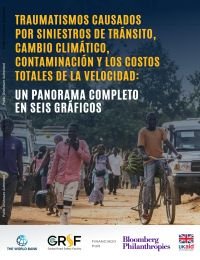
¿Cuál es el costo real del exceso de velocidad para las personas y el medio ambiente? Estos 6 gráficos lo cuentan.
Los impactos de la velocidad en la seguridad de los usuarios de la vía, en la congestión, en la contaminación y en los costos totales de los viajes por carretera son ampliamente malinterpretados: a menudo se basan en suposiciones erróneas, con efectos que se toman como evidentes, no se consideran múltiples impactos, muchas partes interesadas externalizan los costos y se subestiman los impactos (especialmente los costos económicos de las velocidades más altas). El propósito de esta breve nota es proporcionar información sobre estas relaciones relevantes para las políticas fundamentales del transporte por carretera, el diseño y la operación. La evidencia bien establecida muestra la importancia de gestionar las velocidades de viaje para la seguridad vial, la eficiencia, la mejora de la inclusión y las emisiones de gases de efecto invernadero (GEI) y otras. Por lo tanto, la gestión de la velocidad es una fuerte palanca de política para la amplitud de cuestiones que deben abordarse para la movilidad sostenible.
La reducción de la velocidad de viaje representa una oportunidad importante, aunque subestimada, para mejorar la seguridad, los impactos del cambio climático de los viajes, la salud, la inclusión, la economía y, en algunas circunstancias, la congestión. La gestión de la velocidad se puede lograr mediante una serie de intervenciones, que incluyen la infraestructura vial y la tecnología de los vehículos, así como la aplicación de la ley y la promoción.
Los seis gráficos presentados en esta nota cuentan una historia poderosa sobre la gama de beneficios de la gestión de la velocidad.
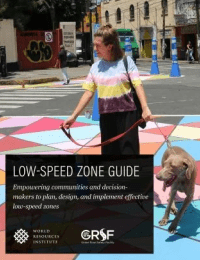
Every year approximately 1.35 million people lose their lives due to road traffic crashes. In many road crashes, speed plays a key role. As a result, managing speed has taken on great importance in cities around the world.
An effective method for reducing speed and improving road safety, especially in high-risk areas, has been to establish low-speed zones. This Low-Speed Zone Guide presents strategies for planning, designing, building, and evaluating low-speed zones. The guide intends to equip communities and decision-makers with the tools to implement low-speed zones that will suit their specific context.
Highlights:
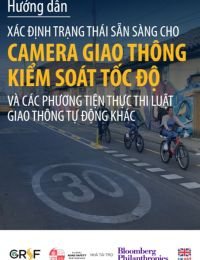
Hướng dẫn này được biên soạn để hỗ trợ một khu vực pháp lý xác định mức độ sẵn sàng chuyển sang thực thi tự động (AE). Camera tốc độ thực thi giới hạn tốc độ là một ứng dụng phổ biến của AE và có nhiều yếu tố pháp lý và hoạt động có hệ thống phải được áp dụng trước khi AE có thể có hiệu quả. Ví dụ, hình ảnh chính xác của một phương tiện chạy quá tốc độ, khi không có hệ thống cấp phép lái xe và đăng ký xe mạnh mẽ, thì giá trị an toàn đường bộ không cao. Điều quan trọng là, thực thi tốc độ tự động nên được coi là một phần của phương pháp quản lý tốc độ toàn diện bao gồm cả cơ sở hạ tầng đường bộ và cảnh sát ven đường. Quản lý tốc độ là một yếu tố cơ bản của Hệ thống an toàn.
Mục đích của tài liệu này:
Các hành vi bất hợp pháp khác, bao gồm không tuân thủ tín hiệu đèn đỏ, sử dụng điện thoại di động hoặc điện thoại di động, đi sai làn đường và không sử dụng biện pháp hạn chế cũng có thể được phát hiện bằng cách sử dụng phương pháp thực thi tự động. Tuy nhiên, tài liệu này áp dụng cụ thể cho việc thực thi tốc độ tự động, vì quản lý tốc độ đòi hỏi sự chú ý đáng kể trên toàn thế giới và đóng vai trò quan trọng trong việc giảm tử vong và thương tích do tai nạn giao thông đường bộ.
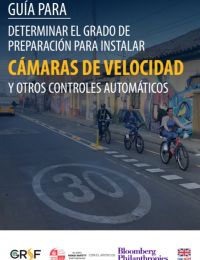
Esta guía se ha preparado para ayudar a una jurisdicción a determinar el nivel de preparación para pasar a la aplicación automática de la ley (AE). Las cámaras de control de velocidad que hacen cumplir los límites de velocidad son una aplicación común de la AE y hay muchos elementos legales y operativos sistémicos que deben estar en su lugar antes de que la AE pueda ser efectiva. Por ejemplo, una imagen precisa de un vehículo que va a exceso de velocidad, en ausencia de sistemas sólidos de licencias de conducir y registro de vehículos, tiene poco valor para la seguridad vial. Es importante destacar que la aplicación automática de la ley de velocidad debe considerarse como una parte de un enfoque integral de gestión de la velocidad que también incluye la infraestructura vial y la vigilancia en la carretera. La gestión de la velocidad es un elemento fundamental del Sistema Seguro.
Objetivos de este documento:
También se pueden detectar otras conductas ilegales, como desobedecer una señal de luz roja, usar el teléfono móvil o celular, usar un carril incorrecto y no usar el dispositivo de retención mediante un enfoque de control automatizado. Sin embargo, este documento se aplica específicamente al control automatizado de la velocidad, porque la gestión de la velocidad requiere una atención significativa en todo el mundo y desempeña un papel fundamental en la reducción de las muertes y lesiones por accidentes de tránsito.

Ce guide a été préparé pour aider une juridiction à déterminer le niveau de préparation à la mise en œuvre d'un contrôle automatisé (CA). Les radars de contrôle des limites de vitesse sont une application courante du CA et de nombreux éléments juridiques et opérationnels systémiques doivent être mis en place avant que le CA puisse être efficace. Par exemple, une image précise d'un véhicule roulant à grande vitesse, en l'absence de systèmes robustes de délivrance de permis de conduire et d'immatriculation des véhicules, n'a que peu de valeur pour la sécurité routière. Il est important de noter que le contrôle automatisé de la vitesse doit être considéré comme une partie d'une approche globale de gestion de la vitesse qui comprend également l'infrastructure routière et la police routière. La gestion de la vitesse est un élément fondamental du système sûr.
Objectifs de ce document :
D’autres comportements illégaux, comme le non-respect d’un feu rouge, l’utilisation d’un téléphone portable, le franchissement incorrect de la voie et l’utilisation d’un dispositif de retenue, peuvent également être détectés à l’aide d’une approche automatisée de contrôle de la vitesse. Cependant, ce document s’applique spécifiquement au contrôle automatisé de la vitesse, car la gestion de la vitesse requiert une attention particulière dans le monde entier et joue un rôle essentiel dans la réduction des décès et des blessures sur les routes.
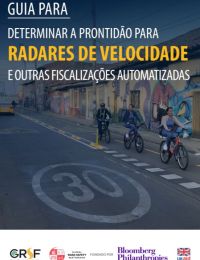
Este guia foi preparado para auxiliar uma jurisdição a determinar o nível de prontidão para mudar para a fiscalização automatizada (AE). Câmeras de velocidade que fiscalizam limites de velocidade são uma aplicação comum de AE e há muitos elementos legais e operacionais sistêmicos que devem estar em vigor antes que a AE possa ser eficaz. Por exemplo, uma imagem precisa de um veículo em alta velocidade, na ausência de sistemas robustos de licenciamento de motoristas e registro de veículos, tem pouco valor para a segurança nas estradas. É importante ressaltar que a fiscalização automatizada de velocidade deve ser considerada como parte de uma abordagem abrangente de gerenciamento de velocidade que inclua infraestrutura rodoviária e policiamento de beira de estrada também. A gestão da velocidade é um elemento fundamental do Sistema Seguro.
Objetivos deste documento:
Outros comportamentos ilegais, incluindo desobediência a um sinal vermelho, uso de telefone celular ou celular, uso incorreto de faixa e uso sem restrição também podem ser detectados usando uma abordagem de fiscalização automatizada. No entanto, este documento se aplica especificamente à fiscalização automatizada de velocidade, porque o gerenciamento de velocidade requer atenção significativa em todo o mundo e desempenha um papel crítico na redução de mortes e ferimentos no trânsito.
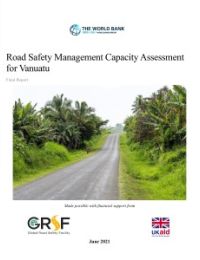
This Road Safety Management Capacity Assessment (RSMCA) seeks to gain a broad understanding of the Government of Vanuatu's road safety management capacity to support its plans to improve road safety outcomes throughout the country. The RSMCA follows the seven critical road safety institutional management functions (Bliss and Breen 2013) to identify key challenges and provide recommendations for improvement in road safety management, and similarly addresses the Safe System pillars for the interventions level. The seven institutional management functions include: results focus, coordination, legislation, finance and resource allocation, promotion and advocacy, monitoring and evaluation, and research and development of knowledge transfer.
The Safe System pillars include road safety management, safe roads and mobility, safe vehicles, safe road users, post-crash care, and safe speeds. The RSMCA’s alignment with both the road safety institutional management functions and the Safe System Approach in turn aims to help the Government of Vanuatu to prioritize targeted next steps to address road crash death and serious injury in the country.
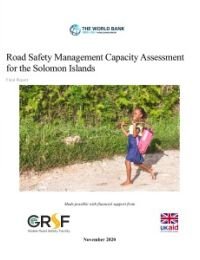
This Road Safety Management Capacity Assessment (RSMCA) seeks to gain a broad understanding of the Solomon Island Government road safety management capacity in order to support the country's development of a national strategy and plan of action to improve road safety outcomes, and subsequently implement those actions effectively.
The RSMCA follows the seven critical road safety institutional management functions (Bliss and Breen 2013) to identify key challenges and provide recommendations for improvement in road safety management, and similarly addresses the Safe System pillars for the interventions level. The seven institutional management functions include: results focus; coordination; legislation; finance and resource allocation; promotion and advocacy; monitoring and evaluation, and research and development of knowledge transfer.
The Safe System pillars include road safety management; safe roads and mobility; safe vehicles; safe road users, post-crash care; and safe speeds. As such, the RSMCA outlines key findings and recommendations relating to both the road safety institutional management functions within the Solomon Islands, and the Safe System Approach, whilst also identifying targeted priority next steps to address road crash death and serious injury in the country.
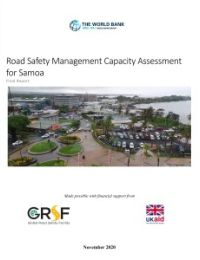
The Road Safety Management Capacity Assessment (RSMCA) is an activity within a broader Advisory Services and Analytics (ASA), which aims to gain a holistic and thorough understanding of the road safety management capacity of three selected Pacific Island Countries (PICs)—Samoa, the Solomon Islands and Vanuatu—in order to support their respective governments to develop national strategies and plans of action to improve road safety outcomes, with a focus on crash data management. The ASA will also support a pilot of the World Bank’s Data for Road Incident Visualization, Evaluation, and Reporting (DRIVER) road crash database in Samoa and provide hands on capacity building in crash analysis.
The ASA is being funded by a Global Road Safety Facility (GRSF) grant from the United Kingdom Agency for International Development (UK AID). The GRSF grant will help the Government of Samoa (GoS) to have a clear image of their road safety situation, risks and challenges, and further on to establish the basis for a national crash database. To ensure sustainability through capacity building and awareness-raising activities, knowledge will be shared with local stakeholders.
The key objectives of this ASA are as follows:
An auxiliary objective is to build capacity to use crash data to identify problems and implement road safety evidence-based measures in Samoa. Furthermore, given the negative impacts of severe weather events on road safety, which will be further exacerbated by climate change, the ASA will help to address the way that road safety is managed in the face of climate change, by training police officers to gain better skills in crash investigation.
The results from the DRIVER pilot in Samoa will be shared with counterparts in selected other PICs, with the aim of scaling up the system across the region. Only with accurate data can road safety be effectively managed and improved, and results measured. In support of this, as of October 2019, the World Bank’s Environmental and Social Framework (World Bank 2019) calls for road safety to be considered on all World Bank-funded projects.
The World Bank is also currently providing assistance to the road sector in Samoa through several projects, including the Samoa Climate Resilient Transport Project (SCRTP), which commenced in 2018. SCRTP will support the GoS to improve the climate resilience of the road network and provide key assistance required to contribute towards effectively managing climate resilient and safe road sector assets. One of the sub-components of SCRTP is dedicated to establishing and operationalizing a database for recording and analyzing road crash data.
The database will combine the existing siloed data, housed in different government agencies, into a single readily accessible platform under the Ministry of Work, Transport and Infrastructure (MWTI). The system will make use of DRIVER, to be piloted through this road safety ASA. SCRTP has other sub-components and activities focused on road safety, such as Road Safety Audits for project roads, a driver licensing training pilot focusing on women, and a road safety engineering technical assistance activity. This GRSF ASA will provide crucial data and insight for the successful delivery of the road safety program under SCRTP, plus other ongoing World Bank-financed projects.
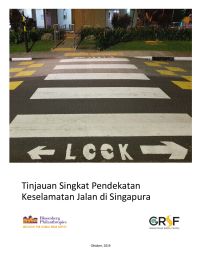
Laporan ini memperkenalkan cara kerja Pendekatan Sistem Aman, dengan fokus pada infrastruktur jalan dan praktik terbaik rekayasa keselamatan jalan dari salah satu negara dengan kinerja terbaik di Asia Tenggara dan Pasifik, Singapura.
Jalan-jalan di Singapura tidak hanya dianggap sebagai yang teraman di kawasan ini, tetapi juga termasuk yang teraman di dunia. Aturan dan regulasi manajemen keselamatan jalan yang diterapkan di negara ini telah menghasilkan langkah-langkah signifikan dalam mengelola dampak faktor tabrakan yang terkait dengan desain jalan raya, perilaku manusia, dan atribut kendaraan. Hasilnya, statistik keselamatan jalan menunjukkan bahwa jumlah kematian di jaringan jalan Singapura terus menurun selama dekade terakhir. Hal ini mendorong keinginan negara-negara tetangga untuk mengikuti contoh Singapura dan belajar dari pengalamannya.
Untuk mengurangi tabrakan yang disebabkan oleh kekurangan atau kerusakan kendaraan, salah satu langkah yang diambil di Singapura adalah memberlakukan kebijakan impor kendaraan yang ketat. Impor kendaraan diizinkan dari negara-negara yang telah mengadopsi dan mematuhi standar keselamatan kendaraan tinggi yang diakui. Kepatuhan terhadap keselamatan kendaraan secara khusus difokuskan pada 52 item yang ditetapkan oleh Otoritas Transportasi Darat (LTA). Selain standar impor kendaraan yang ketat, Singapura memberlakukan sistem kuota kendaraan yang ketat, yang mengatur jumlah kendaraan di jaringan jalan. Selain itu, kendaraan diharuskan menjalani inspeksi berkala. Mobil berusia antara 3 dan 10 tahun diharuskan menjalani inspeksi dua tahunan, dan mobil yang berusia lebih dari 10 tahun diharuskan menjalani inspeksi tahunan.
Selain itu, taksi diharuskan menjalani inspeksi setiap enam bulan. Pendidikan keselamatan jalan dan pendidikan pengemudi merupakan prinsip utama strategi keselamatan jalan Singapura. Pendidikan keselamatan jalan sebagian besar dilakukan oleh Polisi Lalu Lintas Singapura, tetapi organisasi nonpemerintah seperti Sekretariat Koordinasi Keamanan Nasional memberikan kontribusi yang signifikan terhadap pendidikan keselamatan jalan di Singapura.

